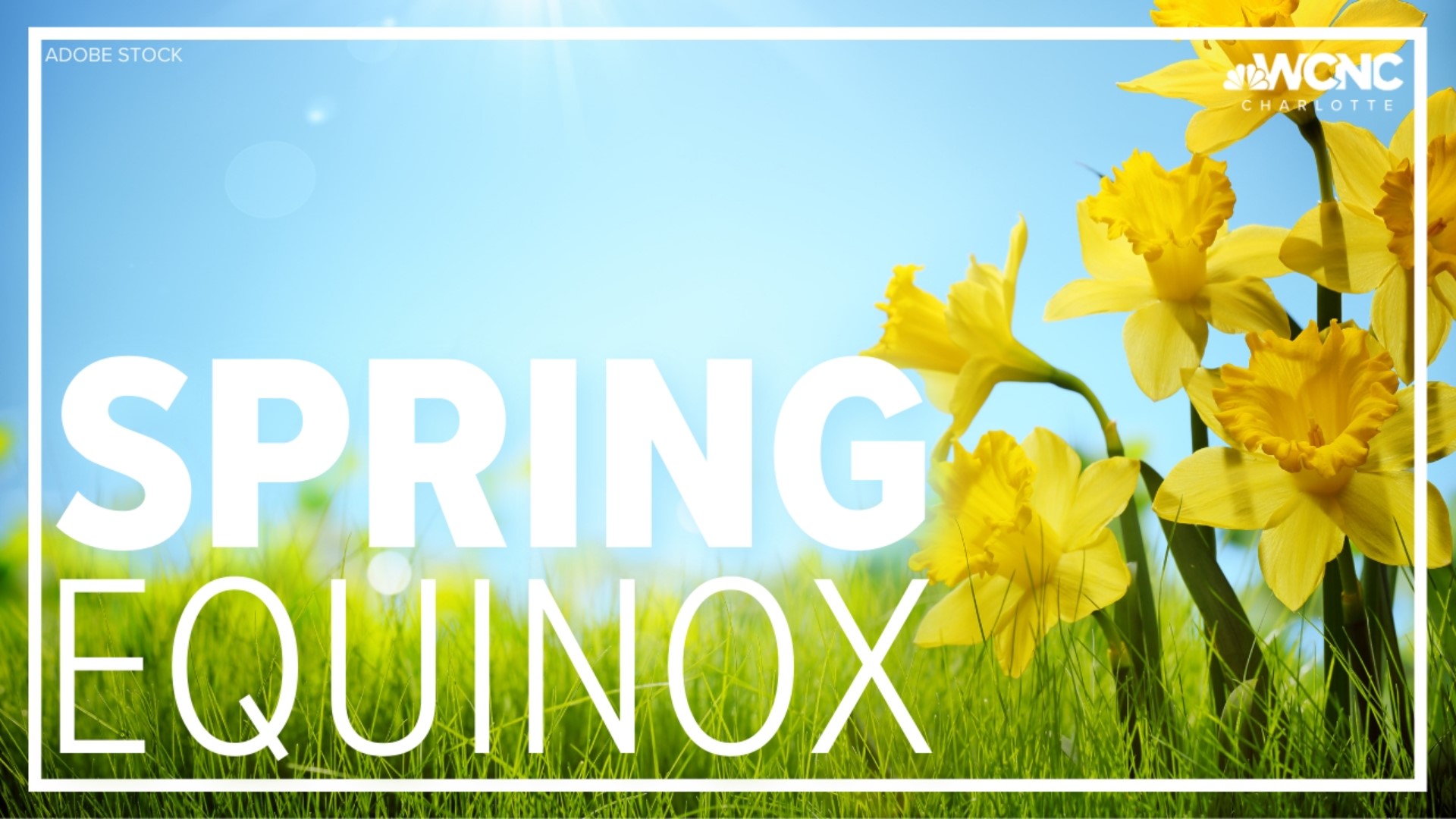CHARLOTTE, N.C. — Astronomical spring begins Monday, March 20th at 5:24 p.m. eastern with the arrival of the equinox.
There's one fun fact everyone can agree on: it can look like spring but feel like winter in the Carolinas.
The equinox occurs twice per year The equinox marks the day when the sun is passing directly over the celestial equator. While similar, it is technically different than the equiliux, which is when there are equal amounts of day and night.
On the day of the equinox Monday, the sun rises nearly-due east and sets due west. (It can still be off slightly by a degree.)
“Go out at sunrise and sunset today," NASA ambassador Tony Rice said. "Look and see where the sun sets and rises, and that will perfectly mark east and west for you."
Rice said the rising and setting of the sun is the fastest on the day of the equinox in September and March, and the slowest during the solstice in June and December.
“So, coming up on the summer, it takes another 30 seconds," he explained. "It all has to do with the angle of the light, the angles that its steepest that makes setting and rising go its fastest."
Essentially the Earth’s tilt is canceled out on this one day, where we also receive roughly the same amount of daylight and darkness.
The vernal equilux occurred for Charlotte this year. On that day, we had nearly 12 hours of both day and night. It happened Friday with 12 hours and 56 seconds of daylight.
By Monday's astronomical start of spring, we had nearly seven more minutes of daylight than night.
“We actually see the sunrise before it’s physically above the horizon and actually see it set below it’s below the horizon," Rice said. "It’s due to something called atmospheric refraction."
Atmospheric refraction bends the light from below the horizon resulting in a couple of extra minutes of sunlight. That's why the vernal equinox and the spring equinox don't technically occur on the same day.
Astronomical seasons are measured slightly differently than metrologically seasons, the latter of which already start and end at the beginning of a month.
Contact KJ Jacobs at kjacobs3@wcnc.com and follow him on Facebook, Twitter and Instagram.

